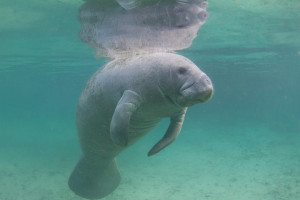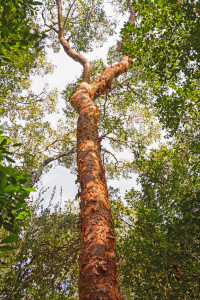 In the United States, the National Parks are some of the last places left in the country that provide true, natural darkness at night. This darkness makes for ideal stargazing opportunities. The Everglades is an ideal place to view a starry sky, while also providing a perfect nocturnal habitat for hundreds of creatures. The wildlife relies on the Park’s natural lightscape for navigation, and knowing when to hide from predators.
In the United States, the National Parks are some of the last places left in the country that provide true, natural darkness at night. This darkness makes for ideal stargazing opportunities. The Everglades is an ideal place to view a starry sky, while also providing a perfect nocturnal habitat for hundreds of creatures. The wildlife relies on the Park’s natural lightscape for navigation, and knowing when to hide from predators.
The Park is dedicated to protecting the natural lightscape. Any lighting placed in the park is determined by the location, energy need, cost, maintenance efficiency, light pollution, and effects on wildlife. The Park Service has installed efficient lightings in new buildings and facilities, including solar-powered light fixtures in the parking lot at the Ernest Coe Visitor Center. All the new fixtures outside direct light downward, which prevents glare and light pollination.
Every month during and around the new moon, the Everglades is a great spot to view the Milky Way. When viewing the glowing band of light with binoculars, you can better see some individual stars. During the winter season, park rangers lead numerous programs where people can star gaze; telescopes are often available to view the starry night. Visitors are asked to arrive early for their eyes to adjust to the darkness; they are also asked to bring a flashlight and to dress appropriately for the weather. One such program is a ranger-led moon bicycle ride on the Shark Valley Tram Road. To book or view schedules, click here.
Explore the Everglades
The starry sky in the Everglades is surely a sight to see – breathtaking views of the stars that you cannot see quite like this anywhere else. If you’re planning on staying late in the Park, take an airboat ride during the day to get a whole different view and perspective of the Park. Join Captain Mitch’s Airboat Tours for a fun airboat adventure. To book a trip, clic
 We’re in the midst of manatee season down here in South Florida. The season begins November 15 and goes until March 31. This year, the government will make a decision on whether or not the manatees will still have an endangered species status. Over the years, the manatees numbers have grown, which is why this change of status may occur. Right now, the manatees’ numbers are around 6,300 in Florida; back in 1991, this number was at 1,267. In the last 26 years, the U.S. Fish and Wildlife Service and local governments have helped create more than 50 manatee protection zones, boating rules, and restricted construction of docks in certain habitats.
We’re in the midst of manatee season down here in South Florida. The season begins November 15 and goes until March 31. This year, the government will make a decision on whether or not the manatees will still have an endangered species status. Over the years, the manatees numbers have grown, which is why this change of status may occur. Right now, the manatees’ numbers are around 6,300 in Florida; back in 1991, this number was at 1,267. In the last 26 years, the U.S. Fish and Wildlife Service and local governments have helped create more than 50 manatee protection zones, boating rules, and restricted construction of docks in certain habitats. Ever heard of the gumbo-limbo tree? No, it’s not from a fantasy book, it’s a real tree that lives in the Everglades. In fact, it’s one of the best-known trees in south Florida. It’s also known as the “tourist tree,” because its peeling bark resembles the skin of South Florida visitors.
Ever heard of the gumbo-limbo tree? No, it’s not from a fantasy book, it’s a real tree that lives in the Everglades. In fact, it’s one of the best-known trees in south Florida. It’s also known as the “tourist tree,” because its peeling bark resembles the skin of South Florida visitors. At the end of last year, a study was released revealing that the bottlenose dolphins in the Everglades show signs of mercury poisoning. Florida International University (FIU) scientists have been examining the dolphins, and released the study that stated the dolphins have a high mercury concentration on both their skin and blubber. These dolphins that were examined live around the Everglades National Park, the lower Florida Keys, and Florida Bay. These dolphins have a high mercury concentration them than any other dolphin population in the world. In fact, the level of mercury these scientists found was the highest level ever recorded.
At the end of last year, a study was released revealing that the bottlenose dolphins in the Everglades show signs of mercury poisoning. Florida International University (FIU) scientists have been examining the dolphins, and released the study that stated the dolphins have a high mercury concentration on both their skin and blubber. These dolphins that were examined live around the Everglades National Park, the lower Florida Keys, and Florida Bay. These dolphins have a high mercury concentration them than any other dolphin population in the world. In fact, the level of mercury these scientists found was the highest level ever recorded.





